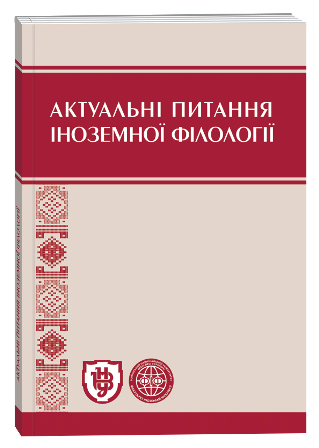СПЕЦИФІКА ОБРАЗНО-СИМВОЛІЧОГО ПРОСТОРУ ТЕКСТУ РОМАНУ В. ҐОЛДІНГА «LORD OF THE FLIES»: КОГНІТИВНО-СЕМІОТИЧНИЙ РАКУРС
DOI:
https://doi.org/10.32782/2410-0927-2021-14-5Ключові слова:
образність, художній символ, художній текст, образний простір, когнітивна поетика, концептуальна метафора, концептуальна метоніміяАнотація
Статтю присвячено висвітленню особливостей образно-символічного простору художнього тексту представника англійського постмодернізму В. Ґолдінга «Lord of the flies» з метою поглиблення інтерпретації художньої семантики твору та виявлення специфічних компонентів образності та символіки, обраних автором для реалізації художнього задуму. В якості методологічного іструментарія в дослідженнні застосовано методику когнітивно-семіотичного аналізу, що передбачає залучення елементів концептуального аналізу та методику реконструкції концептуальних тропів (метафора, метонімія, оскиморон) в художньому тексті. Проведеній аналіз образного простору твору, який інтерпретує в дусі постмодернізму події нацистської Європи, розповсюдження фашизму та трагедію Другої світової війни, дозволив окреслити діапазон і спектр референтів та корелятів явищ навколишньої дійсності та продемонстрував, що домінантними серед образно переосмислених явищ є складники концептосфер ПРИРОДНЕ ЯВИЩЕ, ЛЮДИНА, АРТЕФАКТ, які є щільно пов’язаними в процесах мапування, асоціюючись та контрастуючись одне з одним, а деякі з яких навіть набувають ролі художніх символів в контексті аналізованого твору. При цьому кожен із окреслених явищ набуває особливих аксіологічних характеристик, що також відповідають загальному настрою постмодерністського художнього зображення подій в епоху катастроф людства, зображуючись негативному ключі. Природа зображується хижою, ворожою і небезпечною, людина – наляканою, емоційний стан якої сповнений болісного досвіду та жаху, що на метальному рівні супроводжується низкою когнітивних процесів (аналогія, асоціація, контрастування) і для чого автором добрані відповідні метафоричні (метонімічні) кореляти. До того ж, це підкреслюється образно-символічним переосмисленням артефактних явищ, за допомогою чого автор акцентує увагу на руйнівній для людини ролі цивілізації і соціуму, контрастуючи символи демократії та тоталітаризму – мушлю та «володаря мух», які уособлюють суть соціальних проблем довоєнного та воєнного часів.
Посилання
Бєлєхова Л. І. Словесний поетичний образ в історико-типологічній перспективі: лінгвокогнітивний аспект (на матеріалі американської поезії). Херсон : Айлант, 2002. 328 с.
Воробйова О. П. Когнітивна поетика: здобутки і перспективи. Вісник Харківського нац. ун-ту ім. В. Н. Каразіна. 2004. Вип. № 635. С. 18–22.
Зверев А. М. Уильям Голдинг, сочинитель притч. Дворец на острие иглы: Из художественного опыта XX века. М., 2000. С. 184–198.
Лосев А. Ф. Диалектика мифа. М. : Правда, 1990. 573 с.
Рошаль В. М. Энциклопедия символов. М. : АСТ; СПб. : Сова. 2008. 316 с.
Fauconnier G., Turner M. The Way We Think: Conceptual Blending And The Mind’s Hidden Complexities. NY : Basic Books, 2003. 464 p.
Freeman M. Poetry and the scope of metaphor: Toward a cognitive theory of literature. Metaphor and Metonymy at the Crossroads: A Cognitive Perspective / ed. by A. Barcelona. Berlin; New York : Mouton de Gruyter, 2000. P. 253–281.
Golding W. Lord of the Flies. L. : Perigee Books, 2003. 268 p.
Köveces Z. Metaphor: A Practical Introduction. Oxford : Oxford University Press, 2002. 426 р.
Lakoff G., Johnson M. Metaphors We Live by. Chicago : University of Chicago Press, 1980. 343 р.
Stockwell P. Cognitive Poetics: An Introduction. London: Routledge, 2002. 420 p.
Tsur R. Toward a Theory of Cognitive Poetics. Amsterdam : Elsevier Science Publ., 1992. 315 p.
Zlatev J. Cognitive Semiotics: An emerging field for the transdisciplinary study of meaning. The Public Journal of Semiotics. 2012. № IV (1). P. 2–24.







